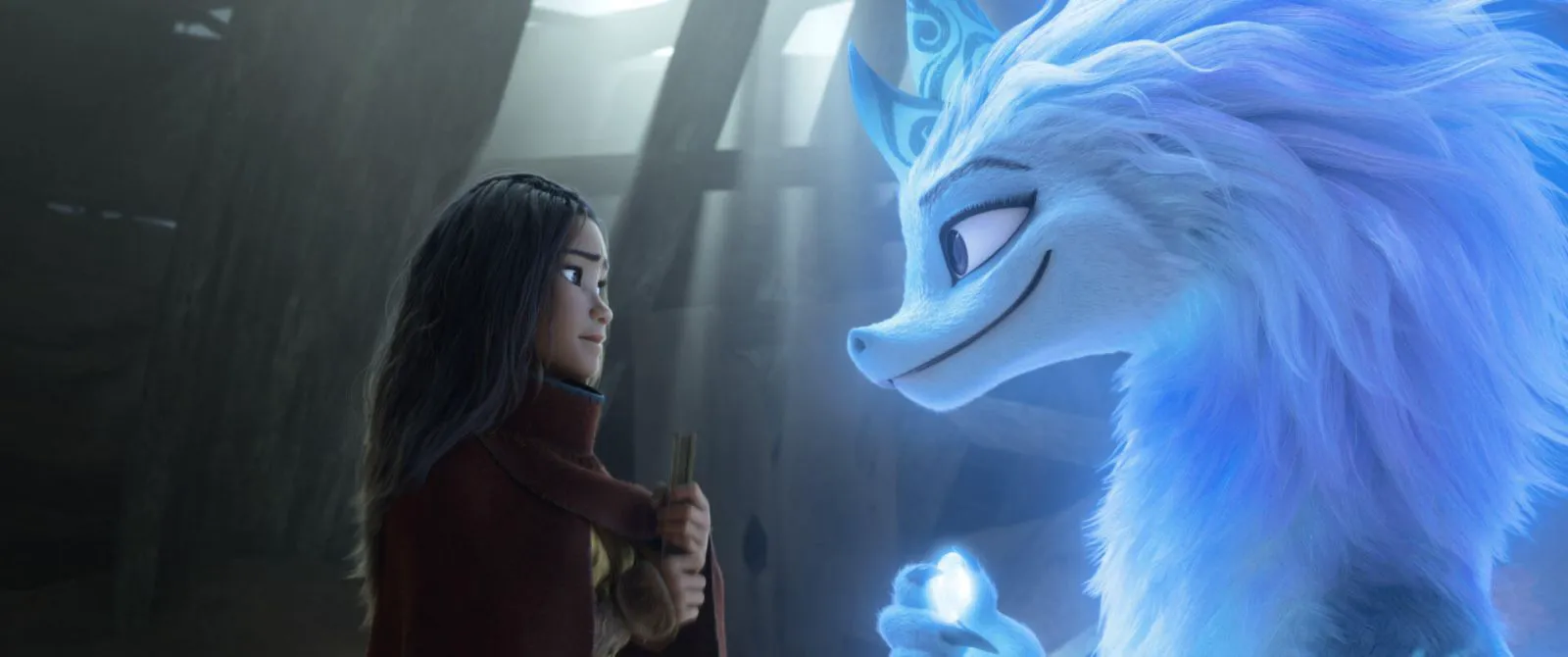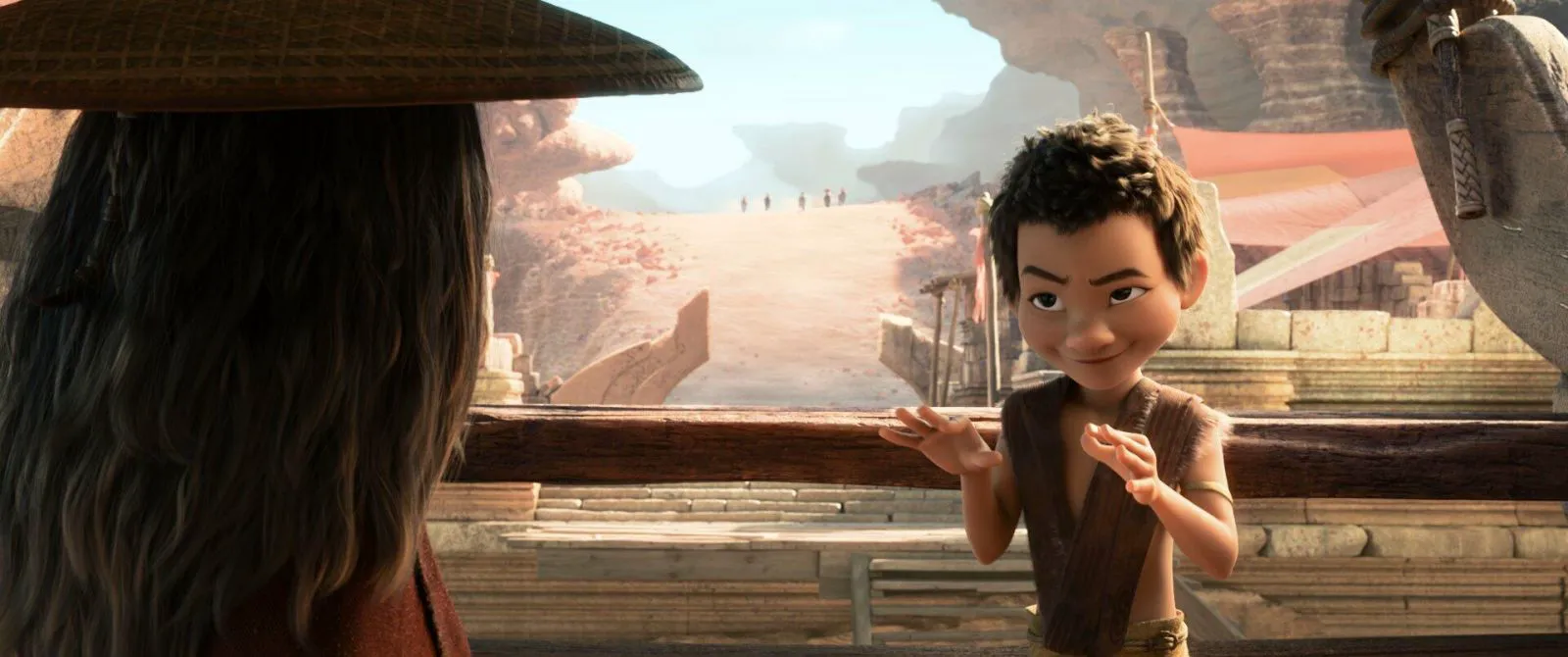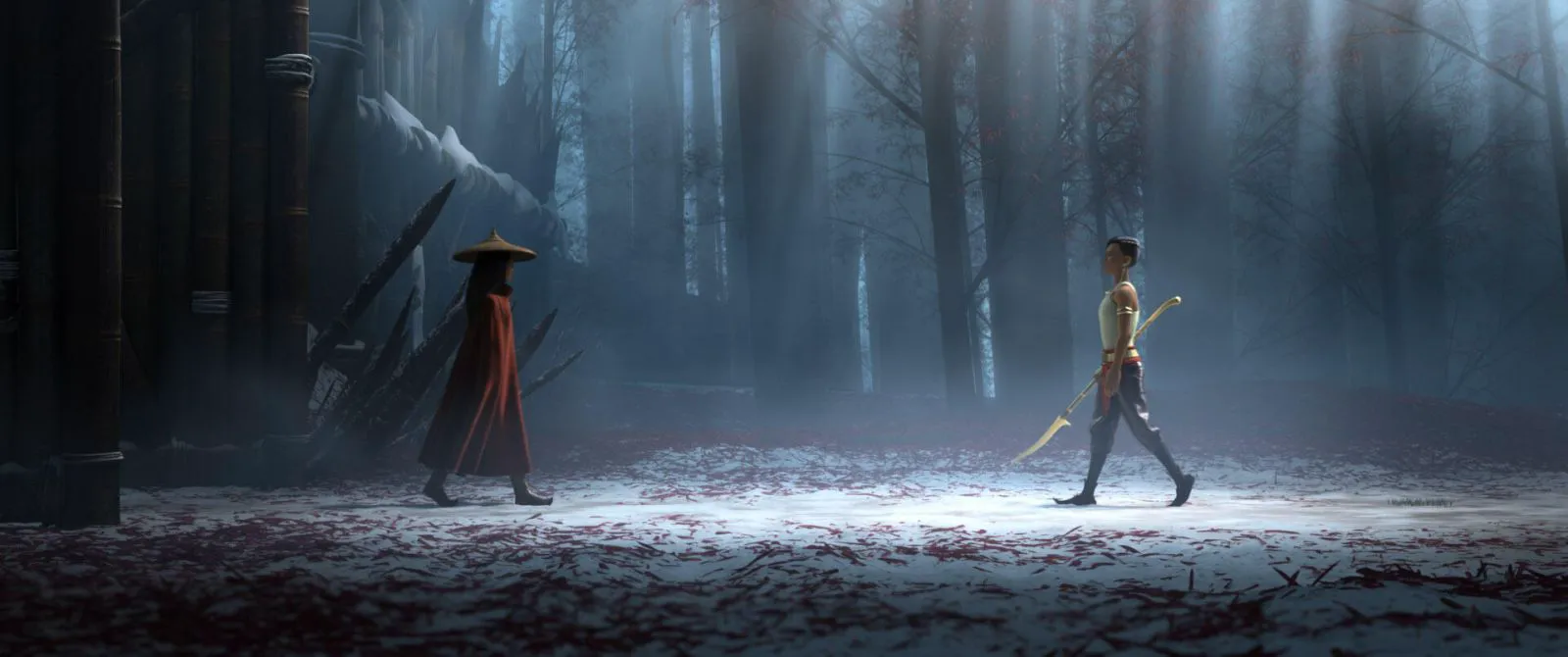Once upon a time, dragons and humans lived together in harmony in a single kingdom. But their peaceful existence was shattered by the arrival of the Druun – near-invincible monsters that turned living beings to stone. The dragons, with their wisdom, united and sacrificed themselves, imprisoning the Druun within a magical (though, as the story reveals, fragile) artifact, allowing humanity to return to its former life. However, humans failed to learn from this gift, descending into infighting after the dragons’ disappearance. The kingdom fractured into warring factions, and its inhabitants destroyed the dragon gem, unleashing the terrifying Druun once more. Now, Princess Raya – one of the few spared from petrification – must revive the last dragon and reunite the kingdom.

Still from “Raya and the Last Dragon”
Even before its release, it was clear what Disney was aiming for with “Raya”: the rarely represented Pan-Asian aesthetic (the kingdoms of Kumandra are a synthesis of Indonesia, Vietnam, Thailand, and other neighboring countries), stunning fairytale landscapes justifying the film’s theatrical release, and, of course, a pacifist message in the finale, swiftly reconciling everyone. Predictably, this forecast came true; there was no other possibility. Disney’s new animated film seems to have struck a chord with audiences, destined for success, but it won’t reach the heights of “Frozen,” another visually stunning feminist eco-tale (though here, feminism and “eco” are only tangential).

Still from “Raya and the Last Dragon”
The question isn’t about which film has more beautiful backdrops, brighter colors, or more realistic animation. Let’s assume “Raya” boasts a richer variety of flora and fauna, and more advanced technology – this much is obvious. But “Frozen” resonated with audiences not solely (or even primarily) because of Disney’s glitz and glamour, but because of its innovative approach to storytelling. The form was important, undeniably revolutionary within Hollywood’s mainstream, but it merely framed the conflict between two sisters, two distinct temperaments, so relatable to a large audience that the fairytale aesthetic only metaphorically enhanced an already understandable plot.

Still from “Raya and the Last Dragon”
Raya, on the other hand, emphasizes visual elegance (though even in this aspect, it falls short of similar films) and relies on established studio templates. The heroine’s sidekick, the clumsy Tuk-Tuk, is nauseatingly adorable, seemingly copied from Aladdin’s Abu (and if you’re not already overwhelmed by saccharine creatures and characters designed to appeal to children, you get three monkeys and a child thief). Her other companion, the dragon Sisu, contrary to Raya’s expectations, isn’t a powerful winged ally but more of a Mulan-esque comic relief like Mushu. And from there, it’s all downhill: lessons about trust, unity, and forgiveness. In short, everything good and nothing bad. It’s not the first time Disney has traded truly impressive and complex stories about the difficulties of understanding loved ones (like “Frozen”) or social inequality (“Zootopia”) for ideological clichés, but here, the scale (several distinct territories with their quirky inhabitants) seems to overshadow the obvious shortcomings.
The Overwhelming Scale of Raya
However, this very scale makes “Raya” ultimately unbearable. For a plot where the MacGuffin is the shards of a dragon gem, and the essence of the characters’ metaphysical quest boils down to collecting the artifact piece by piece and realizing with each step that, well, you should be more trusting of people, a two-hour runtime is a trial even greater than what the protagonists face. This film, it seems, is so confident in its gigantism (more comic relief, more sidekicks, more locations) that it wants to redeem itself with that alone. People may need to be trusted, but Disney once again proves that you need to be wary of them.